Unlike a painting or a sculpture, architectural sites cannot be work of a single artist. They arise from collaborations among historical figures, architects, engineers, bankers, and many more. Some structures become much more than just a place to live, work, worship or be entertained, instead they become symbols embedded with cultural knowledge, history and social value.
Berghahn is delighted to bring Space and Place Series to your attention. This series provides ethnographically rich analyses of the cultural organization and meanings of these sites of space, architecture, landscape, and places of the body. Contributions examine the symbolic meanings of space and place, the cultural and historical processes involved in their construction and contestation, and how they communicate with wider political, religious, social, and economic institutions.
———————————————————————————————————————————-
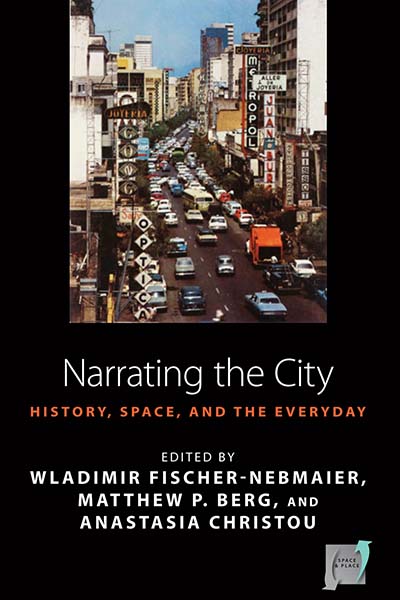 Volume 15 Forthcoming!
Volume 15 Forthcoming!
NARRATING THE CITY
Histories, Space and the Everyday
Edited by Wladimir Fischer-Nebmaier, Matthew P. Berg, and Anastasia Christou
In recent decades, the insight that narration shapes our perception of reality has inspired and influenced the most innovative historical accounts. Focusing on new research, this volume explores the history of non-elite populations in cities from Caracas to Vienna, and Paris to Belgrade. Narration is central to the theme of each contribution, whether as a means of description, a methodological approach, or basic story telling. This book brings together research that both asks classical socio-historical questions and takes narration seriously, engaging with novels, films, local history accounts, petitions to municipal authorities, and interviews with alternative cinema activists.
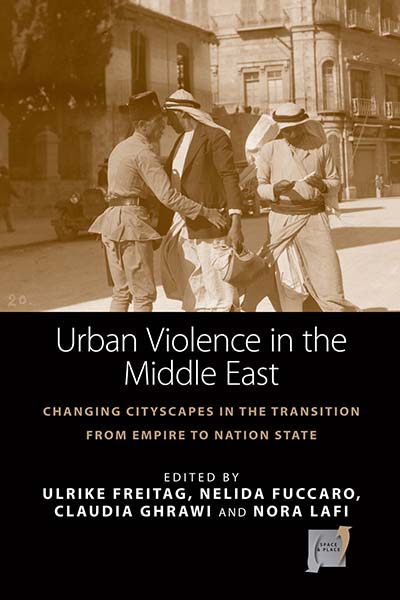 Volume 14 Forthcoming!
Volume 14 Forthcoming!
URBAN VIOLENCE IN THE MIDDLE EAST
Changing Cityscapes in the Transition from Empire to Nation State
Edited by Ulrike Freitag, Nelida Fuccaro, Claudia Ghrawi, and Nora Lafi
Covering a period from the late eighteenth century to today, this volume explores the phenomenon of urban violence in order to unveil general developments and historical specificities in a variety of Middle Eastern contexts. By situating incidents in particular processes and conflicts, the case studies seek to counter notions of a violent Middle East in order to foster a new understanding of violence beyond that of a meaningless and destructive social and political act. Contributions explore processes sparked by the transition from empires — Ottoman and Qajar, but also European — to the formation of nation states, and the resulting changes in cityscapes throughout the region.
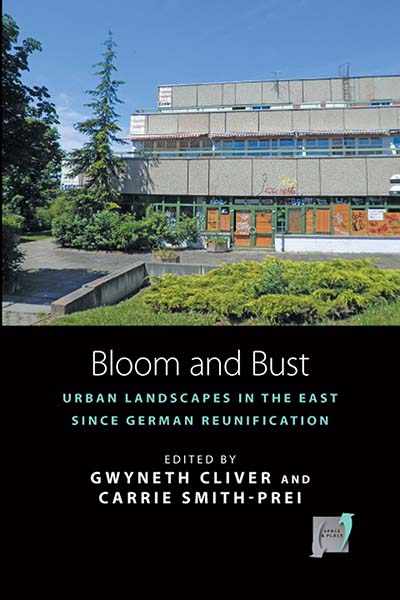 Volume 13
Volume 13
BLOOM AND BUST
Urban Landscapes in the East since German Reunification
Edited by Gwyneth Cliver and Carrie Smith-Prei
More than two decades of deconstruction, renovation, and reconstruction have left the urban environments in the former German Democratic Republic completely transformed. This volume considers the changing urban landscapes in the former East — and how the filling of previous absences and the absence of previous presence — creates the cultural landscape of modern unified Germany. This broadens our understanding of this transformation by examining often-neglected cities, spaces, or structures, and historical narration and preservation.
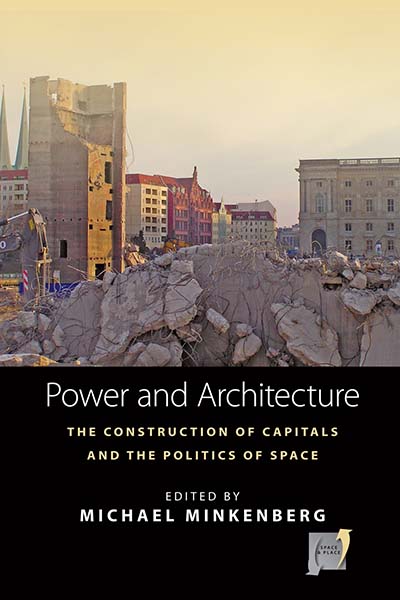
Volume 12
POWER AND ARCHITECTURE
The Construction of Capitals and the Politics of Space
Edited by Michael Minkenberg
Capital cities have been the seat of political power and central stage for their state’s political conflicts and rituals throughout the ages. In the modern era, they provide symbols for and confer meaning to the state, thereby contributing to the “invention” of the nation. Capitals capture the imagination of natives, visitors and outsiders alike, yet also express the outcomes of power struggles within the political systems in which they operate. This volume addresses the reciprocal relationships between identity, regime formation, urban planning, and public architecture in the Western world. It examines the role of urban design and architecture in expressing (or hiding) ideological beliefs and political agenda. Case studies include “old” capitals such as Rome, Vienna, Berlin and Warsaw; “new” ones such as Washington DC, Ottawa, Canberra, Ankara, Bonn, and Brasília; and the “European” capital Brussels. Each case reflects the authors’ different disciplinary backgrounds in architecture, history, political science, and urban studies, demonstrating the value of an interdisciplinary approach to studying cities.
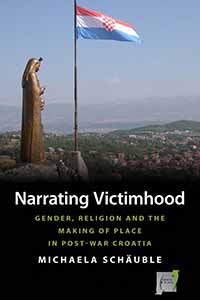 Volume 11
Volume 11
NARRATING VICTIMHOOD
Gender, Religion and the Making of Place in Post-War Croatia
Michaela Schäuble
Mythologies and narratives of victimization pervade contemporary Croatia, set against the backdrop of militarized notions of masculinity and the political mobilization of religion and nationhood. Based on extensive ethnographic fieldwork in rural Dalmatia in the Croatian-Bosnian border region, this book provides a unique account of the politics of ambiguous Europeanness from the perspective of those living at Europe’s margins. Examining phenomena such as Marian apparitions, a historic knights tournament, the symbolic re-signification of a massacre site, and the desolate social situation of Croatian war veterans, Narrating Victimhood traces the complex mechanisms of political radicalization in a post-war scenario. This book provides a new perspective for understanding the ongoing processes of transformation in Southeastern Europe and the Balkans.
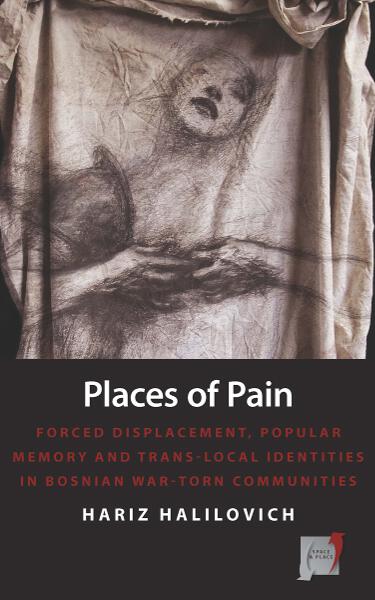 Volume 10
Volume 10
PLACES OF PAIN
Forced Displacement, Popular Memory and Trans-local Identities in Bosnian War-torn Communities
Hariz Halilovich
For displaced persons, memory and identity is performed, (re)constructed and (re)negotiated daily. Forced displacement radically reshapes identity, with results ranging from successful hybridization to feelings of permanent misplacement. This compelling and intimate description of places of pain and (be)longing that were lost during the 1992–95 war in Bosnia and Herzegovina, as well as of survivors’ places of resettlement in Australia, Europe and North America, serves as a powerful illustration of the complex interplay between place, memory and identity. It is even more the case when those places have been vandalized, divided up, brutalized and scarred. However, as the author shows, these places of humiliation and suffering are also places of desire, with displaced survivors emulating their former homes in the far corners of the globe where they have resettled.
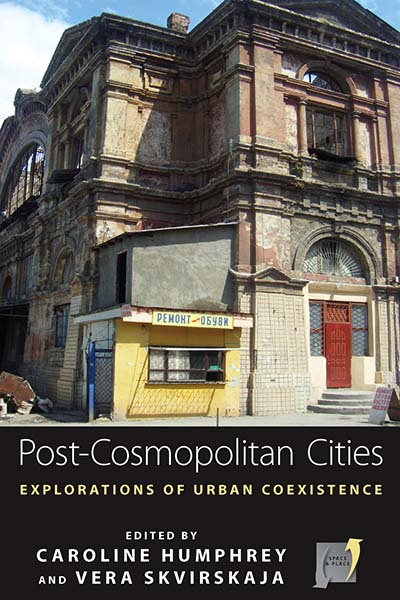 Volume 9 New in Paperback!
Volume 9 New in Paperback!
POST-COSMOPOLITAN CITIES
Explorations of Urban Coexistence
Edited by Caroline Humphrey and Vera Skvirskaja
Examining the way people imagine and interact in their cities, this book explores the post-cosmopolitan city. The contributors consider the effects of migration, national, and religious revivals (with their new aesthetic sensibilities), the dispositions of marginalized economic actors, and globalized tourism on urban sociality. The case studies here share the situation of having been incorporated in previous political regimes (imperial, colonial, socialist) that one way or another created their own kind of cosmopolitanism, and now these cities are experiencing the aftermath of these regimes while being exposed to new national politics and migratory flows of people.
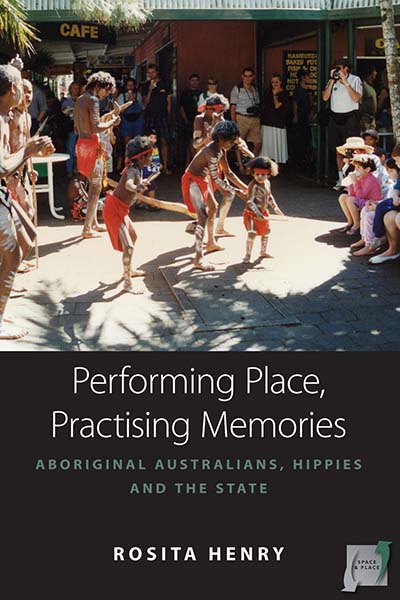 Volume 8 New in Paperback!
Volume 8 New in Paperback!
PERFORMING PLACE, PRACTISING MEMORIES
Aboriginal Australians, Hippies and the State
Rosita Henry
During the 1970s a wave of ‘counter-culture’ people moved into rural communities in many parts of Australia. This study focuses in particular on the town of Kuranda in North Queensland and the relationship between the settlers and the local Aboriginal population, concentrating on a number of linked social dramas that portrayed the use of both public and private space. Through their public performances and in their everyday spatial encounters, these people resisted the bureaucratic state but, in the process, they also contributed to the cultivation and propagation of state effects.
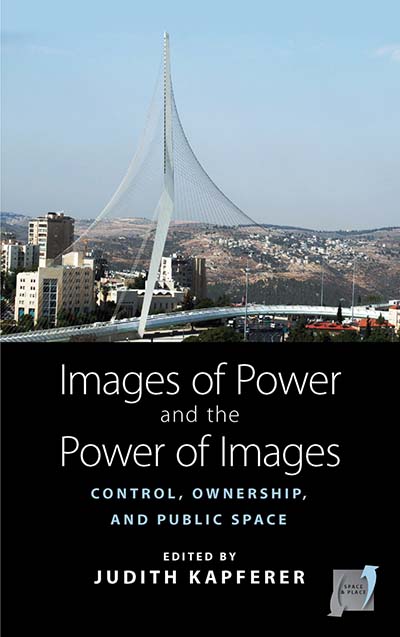 Volume 7
Volume 7
IMAGES OF POWER AND THE POWER OF IMAGES
Control, Ownership, and Public Space
Edited by Judith Kapferer
Real places and events are constructed and used to symbolize abstract formulations of power and authority in politics, corporate practice, the arts, religion, and community. By analyzing the aesthetics of public space in contexts both mundane and remarkable, the contributors examine the social relationship between public and private activities that impart meaning to groups of people beyond their individual or local circumstances. From a range of perspectives—anthropological, sociological, and socio-cultural—the contributors discuss road-making in Peru, mass housing in Britain, an unsettling traveling exhibition, and an art fair in London; we explore the meaning of walls in Jerusalem, a Zen garden in Japan, and religious themes in Europe and India. Literally and figuratively, these situations influence the ways in which ordinary people interpret their everyday worlds. By deconstructing the taken for- granted definitions of social value (democracy, equality, individualism, fortune), the authors reveal the ideological role of imagery and imagination in a globalized political context.
 Volume 6
Volume 6
EXTREME HERITAGE MANAGEMENT
The Practices and Policies of Densely Populated Islands
Edited by Godfrey Baldacchino
Foreword by Mark B. Lapping, University of Southern Maine
Published in association with Island Studies Press, Institute of Island Studies, University of Prince Edward Island, Canada
Conflicting and competing claims over the actual and imagined use of land and seascapes are exacerbated on islands with high population density. The management of culture and heritage is particularly tested in island environments where space is finite and the population struggles to preserve cultural and natural assets in the face of the demands of the construction industry, immigration, high tourism and capital investment. Drawn from extreme island scenarios, the ten case studies in this volume review practices and policies for effective heritage management and offer rich descriptive and analytic material about land-use conflict. In addition, they point to interesting, new directions in which research, public policy and heritage management intersect.
To view all volumes in the series please Visit the Series Webpage.
